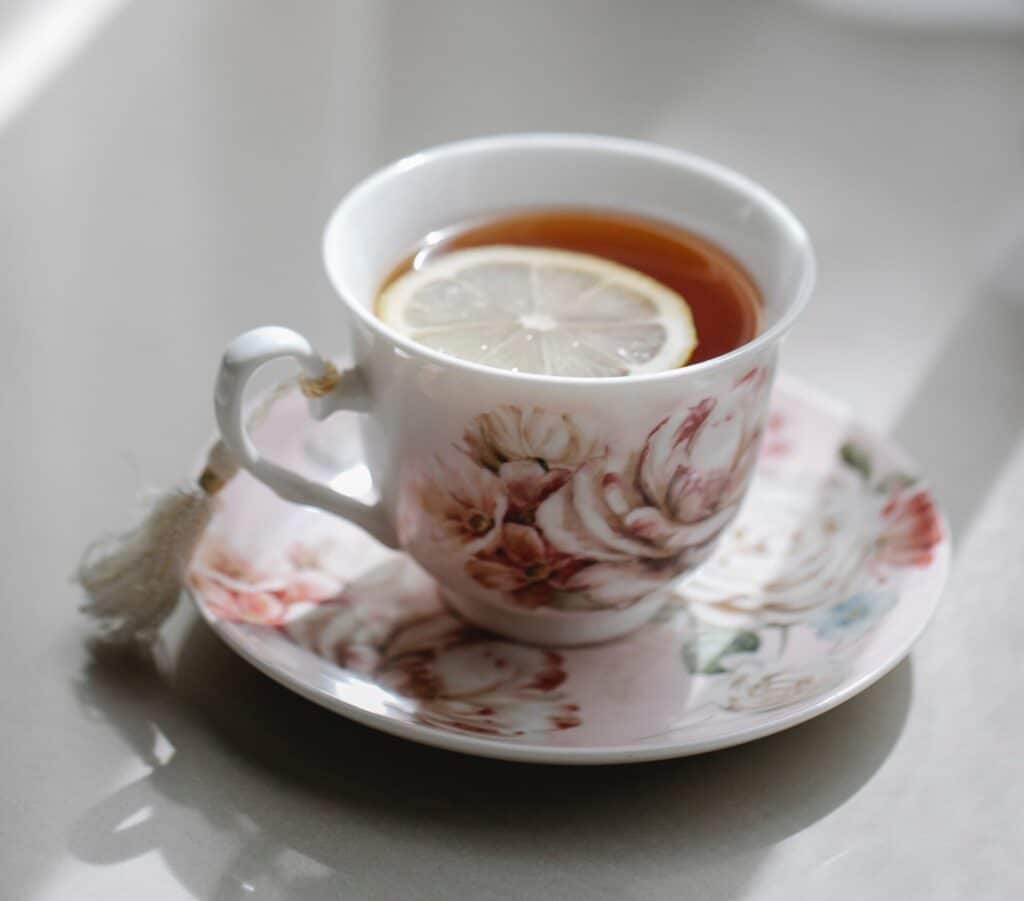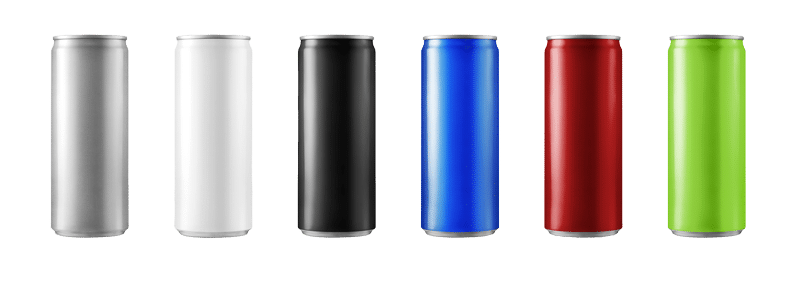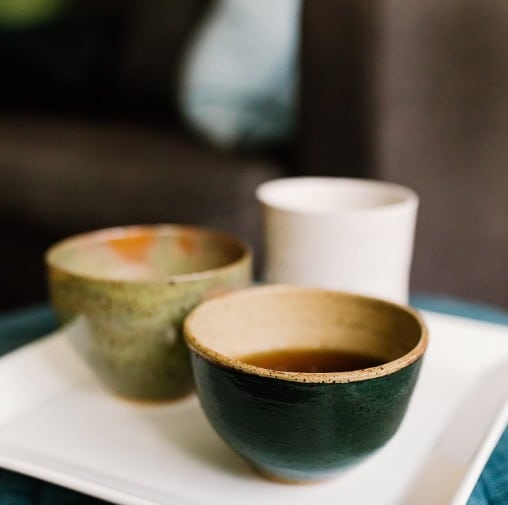Have you ever gotten an unexpected feeling of queasiness after drinking your favourite cup of tea? Especially on an empty stomach?
I didn’t really want to admit that tea could have any negative side effects, but I have to say that it sometimes happens to me too.
Well, after some research I might have found the reason behind this – Tannins!
What are Tannins?
Tannins (not to be confused with tannic acid which is non-flavonoid) are natural phenolic compounds found in the roots, seeds, bark, fruits and leaves of many edible and non-edible plants.
We also get a low of tannins in foods such as fruits (grapes, apple juice, strawberries, raspberries, blackberries, pomegranate, plums, olives), nuts (walnuts) and legumes (black-eyed peas, chickpeas, lentils).
These water-soluble polyphenols are also commonly found in every day indulgences like coffee, wine, chocolate/cocoa and you’ve guessed it – tea!
Plants produce tannins as part of a natural defense mechanism to protect themselves by repelling pests, herbivores and also humans for that matter.
What makes organisms go away from them is the bitter and unpleasant taste associated with their consumption.
Another fun fact, Tannins (from which the tanning process draws its name) were originally used to tan leather and prevent the disintegration of the leathers collagen fibers.
Also, if you’re a wine drinker, it’s the tannins that impart flavour to your favourite red wine and contain antioxidants. But if that same red wine also gives you a headache, tannins are also the likely culprit.
From a tea taster’s perspective, tannins are somewhat responsible for the flavour component of the cup.
You know when we talk about mouthfeel? Well, tannins are what will cause this dry coating/sandpapery feeling in your mouth. This distinct sensation is associated with the term “astringency”.
Tannins also contribute to the colour of your final brew or – from a tea expert perspective – analyzing the tea liquor. For black tea with a high level of tannins, it is said that the colour is reddish/black.
Why is your infusion changing to this dark colour? Although tannins are originally light in colour, when in contact with certain minerals coming from the water – especially iron – they form dark colour complexes.

Tannins in Tea
Every tea coming from the camellia sinensis plant contains tannins to a different degree. How much tannin will end up in your cup of tea is determined by:
-
The production method – younger leaves contain more tannins than older ones. It should also be noted that lower quality tea will have a higher tannin level, enzymatic oxidation.
-
The processing parameters, meaning time and temperature.
In terms of time, the longer the steep, the more tannins there will be. Which is also why our tea gets stronger tasting and more bitter as the steep time increases.
For example, if you steep your tea for more than 5 minutes, you will get a lot of tannins from it.
We can also say that the longer the steep, the darker the tea will be.
As temperature, think about iced tea. It seems that steeping tea in cold water releases fewer tannins, which translates to a smoother and sweeter end result. Something to think about!
Tannin Content in Tea
The majority of the articles I read highlighted the fact that the tannin content is higher in tea than in coffee.
For tea, the levels range between 11.76% and 15.15% for black tea. Oolong tea average 8.66%, and green tea average 2.65%.
No specific numbers were available for the other types of tea. But it is said that white tea has a very low content of tannins.
For PuEhr, it is said that the tannins level will oxidize over time. During its aging period, it will fade and disappear leaving a bold but mellow and more complex flavor known for this type of tea.
Tannins do offer some Health Benefits such as:
Protects against allergies
-
Reduce the risk of heart disease
-
Treat burns
-
Decrease adipogenesis
-
Regulate blood sugar – improve the health of Beta cells – the ones that produce insulin in your pancreas.
-
Antioxidant – scavenge and neutralize free radicals and combat oxidative stress.
-
Antimicrobial – inhibits the growth of many fungi, yeasts, bacteria, and viruses.
To a lesser extent, tannins have also been linked to other physiological effects, such as to accelerate blood clotting, reduce blood pressure, decrease the serum lipid level, act as an anti-inflammatory, and modulate immune responses. Although these were all mentioned in many articles, science is still very hesitant to associate tea with those benefits as more research needs to be conducted over a wider population.
Side Effects:
As mentioned previously, the reason behind this post is that drinking tea has a tendency to cause nausea. From a medical perspective, nausea can be defined as a protective mechanism that warns our body to avoid potential toxic ingestion – tannin in this situation. Each individual has a threshold for nausea that changes minute by minute at any given moment.The threshold depends on the interaction of certain inherent factors of the individual with the more changeable psychological states of anxiety, anticipation, expectation and adaptation (1). Which means that not everyone will react the same after drinking tea with lots of tannins.
Other side effects of tannins include:
-
Act as an anti-nutrient – Impairs the digestive process and blocks the absorption of proteins by making them unavailable or by inhibiting the enzymes needed for your body to properly digest them.
-
Reduce the iron absorption by binding to it – specifically on non-heme iron food found in plants. So, if you are a vegan/vegetarian, you should avoid tea around mealtimes or increase your iron-rich green vegetables intake to compensate for the side effect.
Is it possible to drink tea without experience negative side effects?
-
Shape – Its drop shape holds very well in the hand which make it easy to maneuver on every area of your face.
-
Compostable – 100% natural and biodegradable
-
Colouring and additive free
-
Certified Vegan & Cruelty Free
-
Free from chemicals and irritants
-
Silky soft when wet
-
Suitable for daily use
-
Fully sustainable and ethically produced
Many tea lovers are curious if there is a way to neutralize tannins to avoid the negative aspects.
Tannins are heat-stable which means that they are not destroyed when you heat them up. So let’s look at other ways to reduce their effect on your body.
-
Drink tea between meals
-
Drink with milk as protein, bacterial cell membranes, enzymes involved in food digestion and carbohydrates will bind to tannins and reduce their effect.
-
Put some lemon juice in your tea
-
Drink tea with foods that are rich in vitamin C
Other suggestions I found was to put some baking soda (tannins makes it cloudy) or gelatin powder in your tea. Although these are good ways to decrease tannins in your cup, they will also have an effect on the strength and body of your tea.


